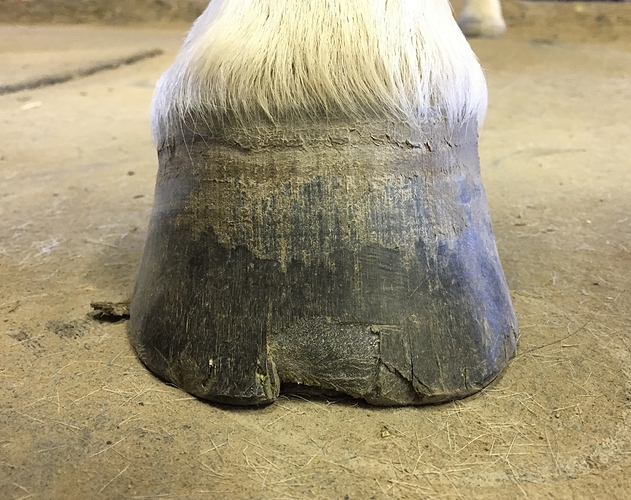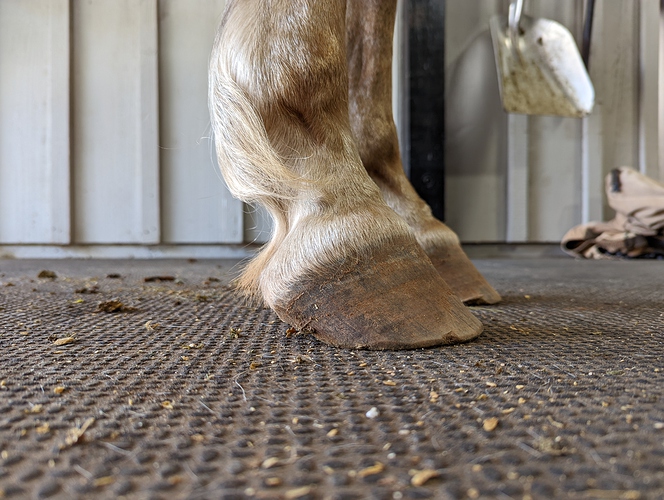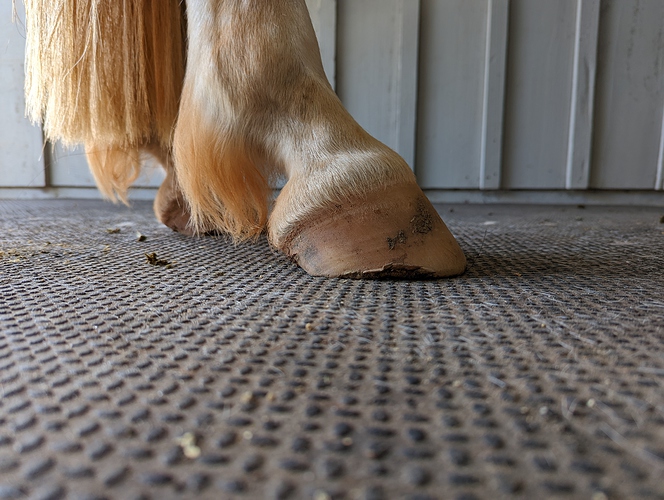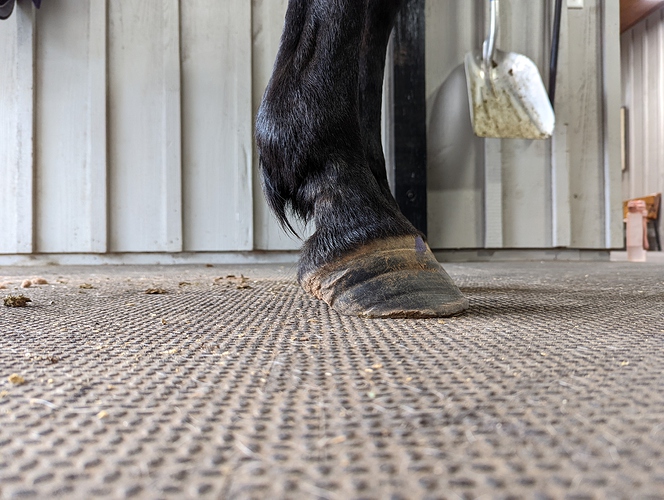I moved my horses to a new barn middle of April. Previously they spent 12 hours inside, 12 hours in grass pasture and were ridden pretty much only in the arena. In the new barn they are out 24/7 unless weather is especially bad (this includes when it’s very hot coming inside in the afternoon) and there is a lot of space to ride outside the arena so they are spending a lot more time on trails, in fields, and on hills. There are is also gravel and concrete that must be crossed to get to various out of the arena riding spaces. Their pasture is also less grassy than before (this is a deliberate choice to limit grass but it means footing is muddier and rockier).
Both my horses are currently barefoot. Since being at the new barn, my horses’ feet are struggling a bit more.
The gelding is very sound even on gravel and concrete, unless we’re passing big gravel pieces, but he is having chipping and breaking around the edges. Previously he never had chips, flares, cracks, etc. But now there is definitely chipping at the bottom.
My mare was barefoot for 8 years, then spent one year in shoes, the shoes were pulled in march, so she is still in ‘transition’ back to barefoot is also having a good bit of chipping and breaking at the bottom. She is sound and comfortable in arena and on the grass, but is clearly uncomfortable when passing over gravel.
So, I guess my question is–is it reasonable to think that both horses might adjust to new conditions and stay barefoot? Or does it seem like the new environment might require shoeing. If there’s reason to think they might adjust, how long should I give them before being able to make a decision? I am not a barefoot or bust person. I will give the horse what they need to do the job I am asking of them. But of course if a horse can be happy and comfortable barefoot then there is no reason to change that.
Both get free choice access to high quality hay. Mare is on performance grain + ration balancer to meet nutritional requirements. Gelding is on beet pulp + vit/mineral supplement. Both get flax.

 .
.



